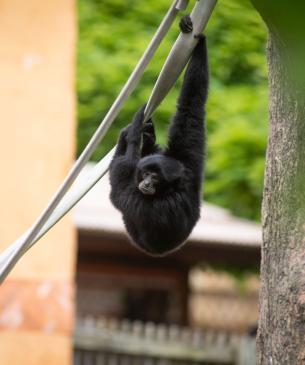The siamang, the largest species of gibbon, is known for its graceful movements through the trees and its impressive vocalizations.
Male and female siamangs sing together to build their relationship and mark their territory. Their calls can be heard from as far as two miles away through the thick rainforest.
Located in Australia & the Islands
Scientific Name: Symphalangus syndactylus
Conservation Status: Endangered
Size: 29 to 35 inches tall with an arm span of up to 59 inches
Weight: 17 to 28 pounds
Median Life Expectancy: 26.7 years










